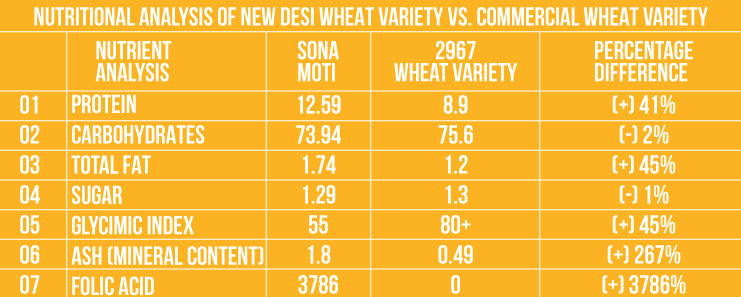Sometimes things seem almost too good to be true. But, pinches aside, they truly are! A determination to bring grass-roots level transformation amongst farmers in Punjab led to an astonishing discovery. Let’s start at the beginning.
Once a fertile land of lush crops, the soldier-like farmers in the land of Punjab were faced with a difficulty. Their land was not yielding as many crops as earlier. Where did the problem lie? Unfortunately the hands of time pointed back at them. The gradual renunciation of age-old methods of natural farming and the adoption of unviable chemical agriculture was obviously giving the exact opposite result. The first in the chain of sufferers were the farmers themselves with loss of crops and an unsteady cash flow. Something had to be done.
Embarking on a program to help farmers adopt viable natural farming methods, The Art of Living introduced Sri Sri Natural Farming. It was essential to make the supply-chain linkage profitable, accessible, and simple for farmers. While conducting programs for farmers in Punjab, a trainer, Virender Mohan Nagpal, stumbled upon a peculiar kind of seed. Nagpal’s experience as a farmer instinctively told him the seed was not an ordinary one. It turns out this wheat seed was grown in India over 2,000 years ago. Long before the Green Revolution, there were ancient Indian desi (indigenous) varieties of wheat grown in India. These varieties are almost extinct in the country today due to the rampant use of hybrid and improved wheat varieties. However Nagpal and his team identified one such variety which was originally found in the Pingalwara Ashram of Pooran Singh near Amritsar.
A golden pearl
When this wheat was grown, the cultivators realized that this wheat had properties that were very relevant to today’s society: low gluten, low glycemic index. “Moreover, we thought it would be a good business model for farmers to grow this variety because we could then directly link them with the consumers. The farmers could get a much better sell price and therefore make a better return for their investment,” says Prabhakar Rao, trustee with the Sri Sri Agriculture Trust.
When The Art of Living sent the wheat samples to test its nutrient values, the results were astonishing. The most amazing one was the presence of 14 percent of folic acid in this wheat variety. Wheat normally has no folic acid and bread needs to be artificially fortified with folic acid. Similarly it has nearly 241 percent more mineral content than the other wheat varieties grown in Punjab and over 40 percent more protein and fat.
Heroes of our service initiatives are empowered by the time-tested breathing technique, the Sudarshan Kriya. Now, learn the tool from the comfort of your home.

This variety has been christened ‘sona moti’ (golden pearl) because of its round shape and golden color.
The nutritional value of ‘sona moti’ as compared with commonly grown wheat HD 2967:

The benefits are manifold as these crops are cultivated with natural farming methods.
Embarking on a revolution
The Art of Living promoted the cultivation of this variety among its farmers in the Jalalabad, Fazilka and Bathinda areas, to create an innovative agricultural business model. Around 20 farmers are presently growing this wheat and expect to harvest 18 tons in April 2019. “The farmer knows he gets a good price, the customer knows that he gets a wonderful wheat so we have introduced this particular model which is very successful. I believe sona moti is really going to create the second dreamed revolution in Punjab,” shares Rao.
Sometimes a revolution begins with a sincere plea to seek something anew. An unknown seed seeks to find its way back into the world of healthy living. Hail the arrival of a second revolution!
For further details, you may fill in the order form and we will get back in touch with you. If farmers wish to grow this particular wheat, they are welcome to undergo our Sri Sri natural farming training, Sri Sri Prakriti Krishi training. It’s a three-day workshop and we will share with them all the techniques for growing this wheat as well as create for them market supply linkages.















